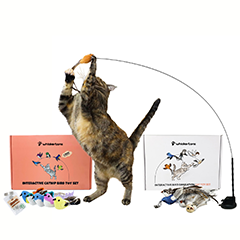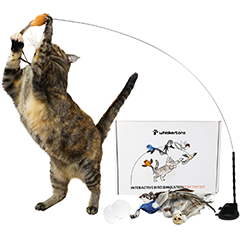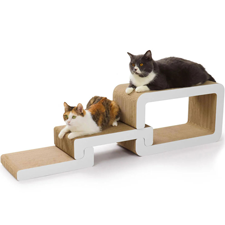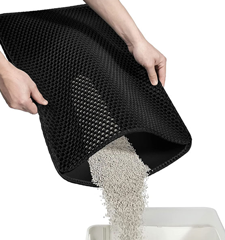8 Facts You Might Not Know About Kittens

We're going to share some of our favorite feline facts about what makes teeny-tiny kittens so adorable. Everyone adores kittens, after all! Put your kitten knowledge to the test with these 8 kitten facts!
1. Kittens are born blind and deaf
Kittens are born altricial, which means they are born immature and immobile, relying solely on their mothers for survival and treatment. Kittens are born with their eyes closed (effectively blind) and their ears folded, preventing them from walking. Kittens usually open their eyes between the ages of 8 and 12 days old, but their vision does not fully develop until they are around 2-3 weeks old.
Dogs, squirrels, and some types of birds (such as owls) are examples of altricial animals.
2. All kittens are born with blue eyes
Yes, you read that correctly! Both kittens are born with blue eyes, which gradually shift to their adult color between the ages of six and seven weeks. When the kitten's eyes are fully developed, melanocytes in the iris begin to produce melanin, the pigment that gives the eye its adult color.
Cats with darker eyes have more melanin, whereas green-eyed cats have the least. A kitten's eyes are still growing when they are born, and as a result, the melanin has not yet been deposited or damaged by light. As a result, kittens' eyes tend to be just blue! Adult cats with blue eyes from kittenhood produce very little to no melanin.
3. Kittens of the same litter don't always have the same father
What a case of family strife! It's likely that many fathers are involved in a litter with a lot of little kittens. Mama cat's eggs can be fertilized by each different male cat she mates with during the same heat cycle if she mates with several males close together. This is known as superfecundation, and it explains why certain kittens seem to be from various fat families.
4. Kittens have 26 teeth
Much like humans, kittens have two sets of teeth! They are born without noticeable teeth, but their "kitten teeth" can appear about three weeks of age. At six to seven months of age, kittens' "deciduous teeth" (also known as baby teeth or milk teeth) fall out and are replaced by 30 adult teeth.
5. A kitten as young as 6 months can have babies of her own!
This is why it's important to spay and neuter your pets! That tiny li'l kitten running around chasing toys and falling asleep sitting up can have babies as young as 6 months old, which might seem unbelievable.
6. Kneading has an important purpose!
Cat owners who adopted their cats as adults or as kittens without a mother can be perplexed as to why their cats knead or "make biscuits" on soft blankets. This behavior is possibly derived from kittens' "kneading" behavior while nursing to induce milk flow. When adult cats are in need of warmth, they will always show this behavior, just as they did when they were younger and used to drink warm milk and listen to their mother purr.
7. Kittens are pretty easy to potty train
Cats have a natural ability to, uh, "eliminate" in and or on the ground, but kittens learn this trait from their mothers. Newborn kittens need stimulation to go to the toilet (which is normally handled by their mother) and will not use the litter box until they are around three weeks old. Use non-toxic, fragrance-free, and non-clumping litters because curious kittens can ingest litter accidentally, posing a health risk.
8. Kittens can walk at around 3 weeks old!
Most kittens can stand after just ten days, but it takes them a little longer to become mobile! Most kittens begin walking around on their own around 3 weeks, with coordination coming in around 4 weeks. It won't be long before they're running around the room doing zoomies! In comparison, most humans begin walking around the age of 11 months.












